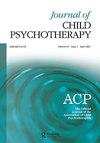Bion’s unique contribution to the theory of representation: autistic states, unrepresentability and the problem of recognition
IF 0.8
Q4 PSYCHOLOGY, CLINICAL
引用次数: 0
Abstract
ABSTRACT For some time, Bion’s unique version of a theory of representation appears to have been overlooked. A close reading of his ideas, however, provides crucial insight into the existence of a concomitant relationship between recognition and representation. To elucidate this notion, I explore the problem of representation and recognition in autistic states, with the use of two clinical cases of child psychotherapy. In both examples, the child’s struggle to coordinate sensorial information was hampering their ability to create a sensorial engram, which if successfully formed would enable a matrix bearing the unique shape of the object to remain, in times of its absence. The process of object recognition is possible when the external object reappears before this matrix and there is a good enough resemblance between them. In contrast, if the child has difficulty coordinating perceptual information and the object fails to assist in this task, an amorphous engram is established in the psyche, to which any entity in external reality can fit. In this way, every inanimate object can become a substitute for a memorable alive object. As a result, a child cannot recognise their significant other and may remain in an undifferentiated state of merger and non-existence.Bion对表征理论的独特贡献:自闭状态,不可表征性和识别问题
摘要一段时间以来,比昂独特的表征理论似乎一直被忽视。然而,仔细阅读他的思想,可以对认知和表征之间的伴随关系的存在提供至关重要的见解。为了阐明这一概念,我利用两个儿童心理治疗的临床案例,探讨了自闭症状态下的表征和识别问题。在这两个例子中,孩子协调感官信息的努力阻碍了他们创建感官植入物的能力,如果成功形成,将使具有物体独特形状的基质在没有的时候能够保留下来。当外部物体再次出现在这个矩阵之前,并且它们之间有足够好的相似性时,物体识别过程是可能的。相反,如果孩子很难协调感知信息,而对象无法帮助完成这项任务,那么在心理中就会建立一个无定形的印记,外部现实中的任何实体都可以适应。这样,每一个无生命的物体都可以成为令人难忘的有生命物体的替代品。因此,孩子无法识别他们的另一半,可能会处于一种无差别的融合和不存在状态。
本文章由计算机程序翻译,如有差异,请以英文原文为准。
求助全文
约1分钟内获得全文
求助全文
来源期刊

JOURNAL OF CHILD PSYCHOTHERAPY
PSYCHOLOGY, CLINICAL-
CiteScore
0.70
自引率
50.00%
发文量
46
期刊介绍:
The Journal of Child Psychotherapy is the official journal of the Association of Child Psychotherapists, first published in 1963. It is an essential publication for all those with an interest in the theory and practice of psychoanalytic psychotherapy and work with infants, children, adolescents and their parents where there are emotional and psychological problems. The journal also deals with the applications of such theory and practice in other settings or fields The Journal is concerned with a wide spectrum of emotional and behavioural disorders. These range from the more severe conditions of autism, anorexia, depression and the traumas of emotional, physical and sexual abuse to problems such as bed wetting and soiling, eating difficulties and sleep disturbance.
 求助内容:
求助内容: 应助结果提醒方式:
应助结果提醒方式:


